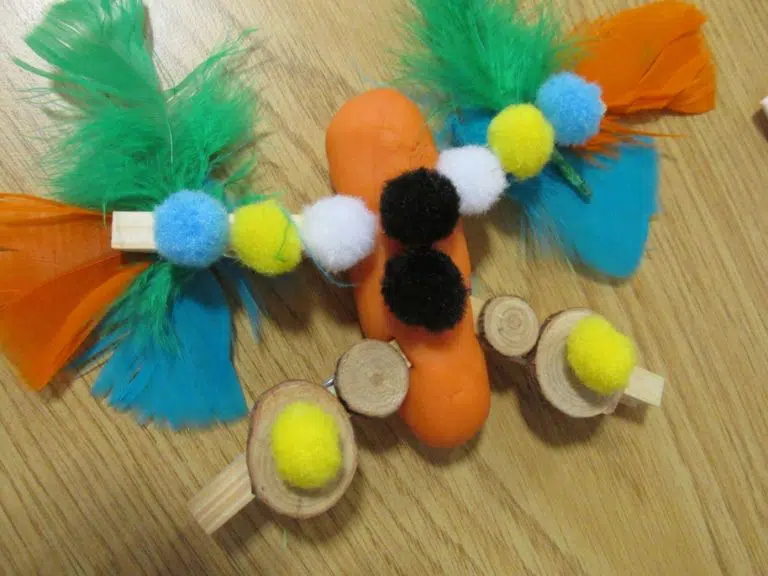Play dough in various colors
Tinker trays filled with assorted loose parts (e.g., corks, bottle tops, feathers, pompoms, wood slices, leaves, bolts, pebbles)
Additional modeling materials (e.g., clay, building blocks, construction paper)
Picture frames (optional, to provide a structured base)
Introduction:
Explain the concept of symmetry and how it appears in everyday objects and living things.
Show examples of symmetrical objects (e.g., butterflies, human faces, cars) and discuss how both sides are mirror images of each other.
Setting Up:
Distribute play dough and tinker trays with assorted loose parts to the children.
Optional: Provide picture frames as a base for their creations.
Creating Models:
Encourage children to choose a theme for their models, such as aliens, insects, vehicles, characters, buildings, or animals.
Demonstrate how to create a symmetrical model by adding elements (e.g., antennas, legs) on one side and then copying them on the other side.
Exploring Symmetry:
Allow children to experiment with creating their own models, ensuring they maintain symmetry by copying elements on both sides.
Guide and support as needed, emphasizing the importance of making both sides identical.
Discussion and Reflection:
Ask the children to share their models with the group and describe how they ensured symmetry in their designs.
Discuss how symmetry is found in nature and man-made objects.
Gallery Walk:
Arrange the models in a display area and have the children do a gallery walk to observe each other’s creations.
Encourage them to identify symmetrical elements in the models they see.
Difficulty Levels:
Preschool to Kindergarten: Focus on simple models with fewer symmetrical elements. Provide more guidance and support.
Grade 1: Introduce more complex models with additional symmetrical elements. Encourage independent creation and problem-solving.
Grade 2: Challenge children to create intricate and detailed symmetrical models. Foster creativity and exploration of advanced symmetrical designs.
What Happened?
Children created symmetrical models, developing an understanding of symmetry through hands-on activities.
They practiced fine motor skills, spatial awareness, and early math skills by counting and copying elements.
The activity provided a creative and engaging way to explore geometric concepts.
Explore More:
Use different modeling materials, such as clay, building blocks, or construction paper, to create symmetrical designs.
Introduce challenges, such as creating symmetrical models with specific criteria (e.g., only using certain shapes or colors).
Combine this activity with other symmetry activities, such as drawing symmetrical shapes or using mirrors to explore reflections.
Extension Activities:
Create symmetrical drawings or paintings using paint and paper.
Use mirrors to explore symmetry in real-world objects and nature.
Incorporate symmetry into other subjects, such as making symmetrical patterns in music or dance.

